Inclusion - A Parenting Perspective
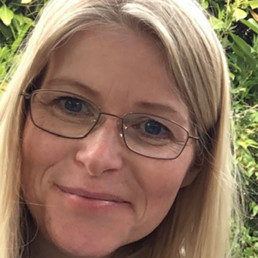
Written by Helen Weston
Helen has two children with significant medical needs which has resulted in her becoming their part time nurse, teacher and advocate whilst simultaneously attempting to be a reasonable parent! Prior to this she worked in Early Years and family support.
Inclusion is a perpetual discussion amongst both teachers and parents alike. This is likely because it has a number of different interpretations which aren’t always agreed upon, it can also be both an ethos and an action. I want all children to feel safe and secure, welcome and considered whilst being educated. My son wants to be remembered that he exists.
As a parent of two children with chronic health needs, the navigation of an equitable education for them has been incredibly challenging. During the last 11 years my children have experienced the best and worst of inclusive practices in various schools.
Effective inclusive practice in my experience always comes from attitudes and ethos and never from expectations of statutory requirements. Funding has been entirely irrelevant, no amount of funding can influence cultural shift. Ethical leaders create that, not money. If a Head is unable to easily explain how their policies and planning sit within the Equality Act, for example, a rigid 100% attendance award policy, yet has an inclusion poster in their reception area, then as a parent, I know my child will never feel a sense of belonging or self worth in this school.
Schools that are child centred rather than data driven always value inclusion, they offer a genuine partnership with families and a proactive approach, again this starts with leadership and is embedded within the every day workings of the school. Teachers who are prepared to listen, reflect and act, can make a huge difference to a child’s perception of their illness or disability and reduce their feelings of difference. This enables them to be more readily able to learn.
One of my children has only ever been able to attend school on a part time basis due to his health. For 4 years he attended his school every morning, his school thought they were inclusive for facilitating a part time timetable, yet he was never offered a broad and balanced curriculum. He was only ever taught Maths and English despite regularly requesting to learn science or do PE with his peers, but their timetable was rigid.
We eventually moved him to a neighbouring school, the difference in attitudes was remarkable. He was listened to and the timetable was swapped around. For the first time in his school career he did PE, science, & enrichment. He was 9 years old. He also took part in his first ever Christmas concert because the practices were moved to the mornings so he could be involved . He had real friends for the first time, adults had role modelled to them that he was an equally valuable member of the school community. His friends looked out for him, helped him, cared for him because this was the ethos of the school and these values were their norm.
At his previous school he had had long periods of time off unwell, upon return to school, staff and children alike would rarely ask after his well-being. In contrast, in his new school his teacher set up a video call with him and his classmates so they could have a chat and check in with one another.
She would also provide him with allergy safe treats when giving a whole class reward. He had never experienced this before. Ultimately inclusion was everyone’s responsibility and not just the role of the ‘Inclusion Manager.’ My experience identified that by outsourcing inclusion to just one individual, others were removed from ever having any consideration for inclusion.
School trips can be a real eye opener as to how inclusive schools are. We have had numerous experiences of schools not bothering to plan for accessibility or do risk assessments therefore having to do them myself last minute ( and on one occasion discovering the activity was unsafe for our son’s medical condition.)
Yet there have also been examples of how early planning and communication can enable trips to be successful, not just practically, but also emotionally positive. My son attended a school residential as a day visitor. The timings of his visits were chosen in collaboration with him, myself, school as well as the activity centre, to ensure he was able to access all the activities offered at that time safely. He was still allocated a room and a bed, his tube feeds were fitted around activities, pacing was done subtly, a special harness was used. Almost three years later, he still talks about that trip with such joyful memories.
The ‘what can we do’ approach is the best way of creating meaningful change, including the child & parents in working through solutions in partnership with schools. My youngest is now in secondary and I note with interest, their use of their term, ‘flexible’, over inclusion. Right now, this is what works best for my son, flexibility, trust and regular communication. Inclusion is not the same for every child but the essence of belonging should feel the same for all.
How can we raise anti-racist leaders?
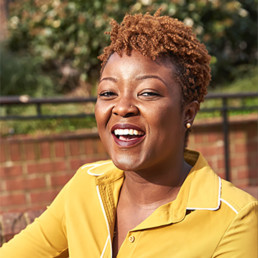
Written by Ayo Awotona
Ayo Awotona specializes in confidence building for girls in education. She does this through programs, workshops, and keynote speeches.
When it comes to speaking about race, white privilege, and colorism; things can often get a tad bit uncomfortable or even awkward, to say the least.
This is understandable. More often than not, these are difficult conversations for most people, and difficult conversations are often characterized by emotions such as fear, anger, frustration, conflict, and other strong dividing — not unifying — emotions. These emotions are often suppressed and can be released rather strongly.
Why is this?
It’s because emotions can run high on both sides, and there is room for the conversation to become quite heated on either or both sides.
This is just one perspective as to why uncomfortable conversations are hard.
So I hope that takes some pressure off of you depending on your curiosity as you first read the title to this blog post 🙂
So let’s dive into this simple (yet, rather complex) question.
How can we raise anti-racist leaders? That is, how can we empower our young people in the world today to make a change by first recognizing racism and challenging it in this seemingly never-ending cycle of systemic oppression?
Before I continue, I must add here that this question is not thrown out to one particular race. This is a question that’s being thrown to each and every one of us reading this (yes! Even me as a Black-British Nigerian woman), because the reality is… change starts with every single one of us. All races and denominations. Change looks different on each and every one of us – rather than a one-size-fits-all approach.
To kick us off with answering this question, it’s important for us to acknowledge/be reminded that children are not colorblind. Children are very much aware of racial differences.
Permit me to simplify how young children learn about race to:
- what they see (both directly and indirectly),
- what they hear, and;
- what they are taught (both at home and in school).
This is really encouraging because it means we (as educators and leaders) play a big role in positively influencing the trajectory of their lives.
Now let’s talk about developing an anti-racism strategy for our young people.
There are different ways to make a change so I’ll give 3 examples of practical things that can be done to help raise anti-racist leaders.
Behavioural Change
As leaders, we ought to know and lead ourselves before we lead others. This means we essentially can’t give what we don’t have. Here are some tips for being intentional about our own growth:
- Listen to other perspectives and de-center yourself
- Boost the voices of the marginalized
- Educate yourself
- Acknowledge your own privilege and propensity for unconscious bias
- Challenge discrimination, even when you feel scared
- Keep the conversation going
Raising Awareness
Sometimes, one of the most powerful things we can offer young people is awareness. This is where we’re focusing their attention on a cause or issue in the world (in this case, related to race). The objective is to increase their understanding – but of course, we must be in a position where we are practicing this ourselves.
Action Planning
A great way to empower young people to take charge of their own learning is through projects – whether this is through achieving tangible or intangible objectives. Action planning activities are designed to support students to build the necessary skills for work and life, as active local and global citizens.
So what could this look like?
Running a workshop where students come up with a project idea to take action on!
During the workshop and overall project duration, it’s important that we support students with their ideas, but steer them in the direction of what is realistic. It is important not to stamp out their creativity, but equally important to ensure students have a clear understanding of how their action plan can be S.M.A.R.T. (Specific. Measurable. Attainable. Relevant. Time-bound)
Some suggested questions to guide your students are:
- What issues do you see happening in your local community that make you upset/angry/you would like to change?
- What issues do you know of happening in your global community? Have you read or seen anything in the news recently?
- If you could change one thing in your local/global community, what would it be?
I strongly believe that for us to move in the right direction of raising anti-racist leaders, change starts with both you and me.
My name is Ayo, Ayo Awotona.
Let’s keep the conversation ALIVE!
The Psychology of Our Quarrels
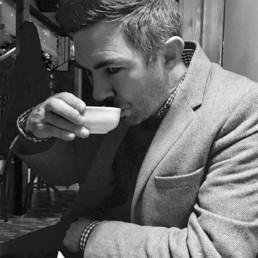
Written by Russell Ridgeway
Russell Ridgeway is an American writer based in Budapest, Hungary. He writes in business, tech, and fashion as well as creative fiction. You can reach him by email (russell@lensawork.com), or on LinkedIn and other social media platforms.
Quarrels do happen in our everyday relationships, with our family members, significant others, co-workers, and friends. Is it normal to have them regularly? What can we do about them? Do they have to be ongoing, or are there specific ways to reduce their frequency and intensity? Let’s take a closer look at this actual and significant topic, and find solutions that could work.
There are those types of people who avoid conflicts in contact, sometimes both parties. In other relationships, one person tends to fight more than the other, or the people keep changing roles. And it is becoming a pattern, which they cannot handle well, as the people involved are not sure what to do. No wonder why; we lack this kind of education!
How Quarrels Work
By observing, analyzing, and coming up with solutions to your quarrels, you can make your life better. Doesn’t matter who you usually fight with. This is what you, or more ideally, both of you should be doing. Realize that each of these scenarios has a starting point, a major phase with intense emotions, and a closing point. Why is this crucial to observe?
By doing so you can see some interesting patterns. Be it a relationship between married couples, parents and children, siblings, or co-workers, it always happens similarly! If you observe them, you can realize that there are only a few typical scenarios that keep repeating themselves. When the two (or more) of you start with the same words, actions, or things!!
Think of the analogy of a cup. Your cup is your relationship. When you fill into it a bit of a quarrel at times, it becomes fuller and fuller until it reaches its full capacity. That’s also the point when your relationship can’t take more at any one time, so it blows up!
How Do We Fight
You should take a piece of paper, and write down the following:
- How do you usually start fighting?
- What do you say to each other?
- How do you both feel?
List two of the most common types of your quarrels. Try looking at yourselves like someone neutral, an outsider. Remember, you don’t have to be one with your fight! Key points to consider: In what kinds of situations do they come up? How do we usually behave? What is the other saying that triggers us? How do we both react to each other?
Look for those situations in which these fights appear. Observe both of your moods consciously. Were you already under pressure because of other things? Were you tired? Did you sleep enough? Were you adding fuel to the fire just because the other person also hurt you? Did you try to consciously stop fighting, hurting the other’s feelings, or come to a solution?
You Are in Control
Did you allow the fight to take the best of you, feeling you are powerless? We often give away our power to the fight, when we should aim to do the opposite: disallow it to become ugly in the very beginning. Before expressing your pain, and thus hurting the other person, ask yourself to take it easy. Say to yourself, I am in control, not my pain. You should aim not to hurt the other.
Start to take control the earliest possible, before the quarrel gets big! This is the best way to alter its outcome to what you want it to be. Many times, what we say to the other person isn’t as hurtful as how we say it. When this happens, remember, that this won’t make your contact better and surely doesn’t lead to your desired outcome! When you start observing it, you are in control!
Fighting is like being in trance, we tend to lose our conscious behavior. Our survival mechanisms are turning on, switching off our intellect. So, what you need to do is, get yourself out of this state! Start moving if you were sitting earlier, go out into the fresh air, take some deep breaths, wash your face… Do the same with your feelings, switch them to positive ones! Remember who is the boss!!
Quarrels and fights are inevitable. Like it or not, they are a natural part of each human connection. Therefore, your aim should be to avoid them as much as possible. How? By reducing their frequency, strength, and length. If you strive to make them more and more temporary, and less significant each time, you create a win-win situation for everyone.
Think of things that the other person likes and be willing to give them that instead of what you like. Have a conversation to clarify each other’s needs before it is too late. If you want to make any of your relationships work.
Men, women and the rest of us: a brief guide to making university classrooms more accessible to trans and gender non-conforming students
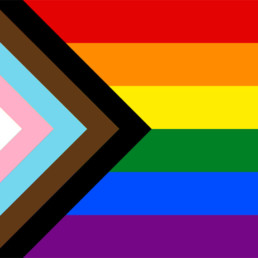
Written by Kit Heyam and Onni Gust
Onni Gust: Associate Professor of History, University of Nottingham. Author of Unhomely Empire: Whiteness and Belonging, c.1760-1830.Kit Heyam: Lecturer in Medieval and Early Modern Studies at Queen Mary, University of London, freelance trans awareness trainer, and queer public history activist.
This is a guide for academic teachers who want to get the best out of their trans and gender non-conforming students, and to ensure that they can fully participate in the classroom and in their studies.
1. Avoid making assumptions
Don’t assume you know a student’s gender based on body-type, voice or even dress. If they do disclose their trans status, don’t assume that they have or will undergo any form of medical transition; ask them how you can support them. All you really need to know is how to address them.
2. Names and pronouns are all you need
Names and pronouns are all you really need to know from your students. For trans and gender non-conforming students, the name, sex or title on their student record may be wrong. Using a student’s ‘old’ name may force them to come out, which can be incredibly distressing as well as violating the Equality Act. To avoid this:
Names:
- Instead of calling out the register, ask students to either write or say their names.
- Be up-front with students and ask them to see you, or email you, after class if for any reason their name has changed.
- Online platforms often automatically display names from University records. Familiarise yourself with your university’s name-changing processes – and if there aren’t any, insist that they be put in place.
Pronouns:
- Even if you think it’s obvious, explain to students how you like to be addressed. This models the process for all students and makes it much easier for trans and gender non-conforming students to state their own pronouns. Regardless of whether you’re trans or not, it also sends a powerful signal, showing you’re aware you can’t tell someone’s gender just from looking at them.
- If you ask students to introduce themselves to the class, give them the opportunity, but not the obligation, to include their pronouns.
- Gender-neutral pronouns, which some students will use, include the singular they/them/their; ze/hir/hirs; fae/faer/faers. The list is growing: if you’re unsure, ask the student to model the usage for you, or research it online.
- If you get a student’s pronoun wrong, apologise, correct yourself and move on.
3. What if other students constantly misgender a student in your class?
If a trans or gender non-conforming student brings this to your attention, it may be worth taking that student aside and talking to them. If, as a transgender teacher, I suspect that this is active transphobia, I would probably ask a cisgender colleague to intervene.
4. How else can I make learning more inclusive?
Consider your syllabus. It may be necessary to teach material that uses outdated/pejorative language, or ideas, about gender and sexuality (and/or race, class and disability). Flag up the problems, explain to your students why these texts are necessary to engage with, but make it clear that you do not support these ideas and that you invite critique.
Think about how you’ll manage any resulting questions or disagreements. How can you help your students to create a trans-inclusive seminar environment without making them feel overwhelmed, alienated or defensive?
5. Pastoral care for trans and gender non-conforming students
Awareness of trans and gender non-conforming identities is moving at a fast, but very uneven, pace. While your students will hopefully have support at home and at university, that’s still not the case for the majority. In a recent UCAS report, 17% of trans university applicants reported having had a bad experience at school or college, and trans applicants were less likely than LGB applicants to have good expectations for university. The report recommends that universities and colleges introduce bespoke resources to support trans students.
Trans people remain disproportionately affected by mental health problems.If your trans and gender non-conforming students disclose mental health problems to you, treat them as you would any other student, butbear in mind the following:
- Not enough counselors or GPs are trans-aware; some have been known to do more harm than good.
- Specialist gender services have waiting lists of over two years from referral by a GP.
If a student comes out to you as trans part-way through a semester:
- Think about your reaction: this is a vulnerable moment for the student. If you don’t understand something, ask politely and calmly for clarification.
- Don’t make any assumptions: trans people differ in their identities and their choices about social and/or medical transition.
- Let the student take the lead: support them if they want to come out to their class, but don’t force it.
Further resources:
For you:
UCAS, Next steps: What is the experience of LGBT+ students in education?
Equality Challenge Unit, Trans staff and students in HE and colleges: improving experiences
For trans and gender-nonconforming students:
GIRES (Gender Identity Research & Education Society – including a directory of support groups)
Implementing Effective Flexible Working Practices Training for School Leaders
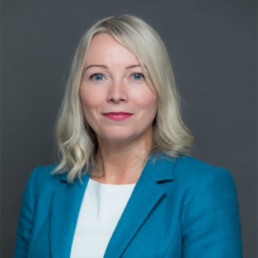
Written by Mandy Coalter
Mandy is the founder of Talent Architects, helping schools be great places to work. She is a published author and was named as one of the Top 10 most influential HR people. She is the former Director of People at United Learning.
Want to better promote inclusive working practices?
Getting more flexible working requests?
Wondering how to retain talent?
Want to enhance your ability to advise on new ways of working, how to adapt, as well as promoting staff wellbeing through flexible working practices?
Our sessions could be for you
The road to a flexible and agile workforce is more important now than ever before, especially in schools. Expanding opportunities for flexible working will be particularly important post-pandemic, where remote and hybrid working have become widespread in some sectors. Creating more scope for flexibility is possible in all roles in a school, promoting a better work-life balance, supporting the diversity and inclusion agenda and addressing the recruitment and retention issues in the sector. Join Timewise, the flexible working experts, and their panellists in a series of webinars, Q&As and drop-in clinics to learn more about what a proactive, whole-school approach is about, starting in October:
Webinar for Heads: Tuesday 05 October at 10am (90 minutes)
Register here https://bit.ly/3jR2pMk
Webinar for School Business Professionals/HR: Wednesday 06 October at 10am (90 minutes)
Register https://bit.ly/2Uc4hXp
Webinar for Governors & Trustees: Tuesday 12 October at 2pm (60 minutes)
Register here https://bit.ly/2VPlc2b
Afro Hair: The Petting Microaggression
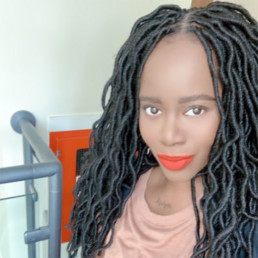
Written by Adeola Ogundele
Adeola Ogundele is Head of Year 9, Head of Media Studies and a Teacher of English who has completed her NPQSL. She is a passionate advocate for Equality and Diversity. She tweets as @ao1982_
As black women, we have a very close relationship with our hair. Our hair is more than just keratin, it’s a badge of pride and honour because of the history behind it. Let’s celebrate World Afro Day on 15th September with the global The Big Hair Assembly.
In the late 1700s to the 1800s, there was a law – the Tignon Laws. This law demanded that women of colour cover their hair with fabric cloth. This law was introduced to curtail the growing influence of the free black population and keep the social order of the time. It was believed that black women were exhibiting unacceptable behaviours, which included the hairstyles they wore. These hairstyles drew the attention of white men. Black women were, apparently, wearing their hair in such lovely ways; adding jewels and feathers to their high hairdos and walking around with such beauty and pride, that it was obscuring their status. This disrupted the social stability of white women. Therefore, the law was introduced to minimise a black woman’s beauty. In many societies, white women would cut off a black woman’s hair, as they felt that her hair ‘confused white men’.
Without the fancy hairstyles of black women, white women believed that black hair, in its natural state, was ugly. White was the epitome of beauty, the straight hair and the fair skin. So, the further a person was from fitting with that ideal, the more unattractive they were deemed to be.
Slavery was abolished in the 19th century. As black women were free, they felt pressure to fit in with the European ideals and therefore adapted their hairstyles.
‘Black people felt compelled to smoothen their hair and texture to fit in easier, and to move in society better and in camouflage almost,’ says exhibition producer Aaryn Lynch.
‘I’ve nicknamed the post-emancipation era ‘the great oppression’ because that’s when black people had to go through really intensive methods to smooth their hair. “Men and women would put their hair in a hot chemical mixture that would almost burn their scalp, so they could comb it back and make it look more European and silky.’ Chemically straightening hair was often called relaxing the hair, a problematic term. Or perming the hair, as it was permanently straightened – until the new growth came through and you’d have to apply more chemicals to the new growth.
During the civil rights movement, black people began wearing their Afros and it was seen as a political statement and a form of rebellion. Black people felt a sense of pride and as they protested against racial segregation and oppression, the eye-catching style took off – an assertion of black identity in contrast to previous trends inspired by mainstream white fashions. Unfortunately, that’s all the Afro was, a political statement and a form of rebellion. When in fact, an Afro is the natural state of a black person’s hair. However, because black women have adapted to the European beauty ideals for so long, the Afro and the Afro hairstyles are seen as against the ‘norm’.
It was only when I was in my early 30s that I knew what my natural hair texture was like. There is a range of natural hair types. My hair is probably a 4a with some parts that are 4b and it is also very thin. I have always known that it was thin but I never knew the texture of it. I never knew the texture because my mum relaxed/permed my hair when I was really young. While I was in school, most of the black girls also had relaxed/permed hair. It was believed to be ‘easier to manage’ and it also ‘looked nicer’ – because it was straight. Obviously, these were unconscious ideas that were ingrained within us as a result of white supremacy.
This Morning presenter, Eamonn Holmes, told Dr Zoe Williams that her hair reminded him ‘of an alpaca’. He continued with, ‘You just want to pet it.’ Dr Zoe Williams laughed along and jovially responded with, ‘Don’t touch my hair!’.Black women have been faced with several micro-aggressions regarding their hair and the way to navigate it and to avoid being referred to as angry, is to laugh along. However, Dr Zoe William’s reference to the very well-known phrase ‘don’t touch my hair’ is an indication that she didn’t receive Eamonn Holmes’ comment well.
According to a study conducted earlier this year, it was found that black people experience ‘racial trauma’ because of frequent afro hair discrimination. At least 93% of Black people with Afro hair in the UK have experienced microaggressions related to their hair, and 52% say discrimination against their hair has negatively affected their self-esteem or mental health. So, describing a Black woman’s hair as animal fur and saying that you would like to ‘pet’ it, contributes to this damaging trend of ‘othering’ by treating Afro hair as a fascination. It is also very offensive.
Many people may fail to understand why comments about black hair can be so damaging, considering hair being superficial. But Afro hair is, unfortunately, political. Black people are punished and excluded from certain spaces because of the way their hair grows naturally on their heads.
‘Hair is a sensitive topic for black and mixed-race women as a lot of us still struggle with how to manage it, along with a lack of diversity in products in mainstream stores – so it’s like twisting the knife.’ says Keisha East, natural hair blogger and influencer.
Keshia adds that black women already feel pressure to conform to European beauty standards, particularly in professional spaces. ‘It can be really damaging to our self-esteem,’ she adds. ‘Quite frankly, negative conversations around our hair can be exhausting, as we already face so many other challenges.’
There is a culture of it being okay to be ignorant towards black hair. However, why are so many ignorant towards our hair? It’s because we either straighten it, to fit in with social norms or wear extensions as a form of protection and/or to hide it away because we know that our hair is not seen as acceptable in a professional setting.
We often find that white people have a desire to touch our hair because it’s ‘different’ and they’re curious. However, this is a huge invasion of our privacy and, considering that black women are underrepresented in the media and the representation usually being where we fit the European beauty ideals, touching our hair and the fascination with our hair, is a symptom of unconscious bias informed by white supremacy. In the context of the history of black people’s bodies and looks being objectified, dehumanised and marginalised, the impulse for white people to touch black women’s hair sends the message that our bodies are there as objects to be touched and looked at.
I’ve never looked at a white person’s straight hair and been shocked by it or found it amazing. I’m also used to seeing it, as it’s what the media and society has told me is the ‘norm’ and therefore, beautiful. However, a black person’s hair isn’t seen the same way. The way a black person’s hair grows out of the head is seen as something of an amazement, a form of rebellion or unprofessional.
There has been the rebuttal, ‘My hair is curly and people always want to touch it, and I’m white.’ Right! That’s the point being made. People want to touch your curly hair because it’s seen as an anomaly. It’s not seen as ‘normal’ hair, hence people being fascinated by it. Also a white person’s curly hair is probably a 3b at most. Black people have curly hair (mainly type 4 hair), it’s our normal – but not the norm.
This needs to change.
The Importance of Empathy
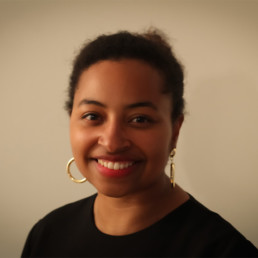
Written by Rebecca Ferdinand
Marketing manager at Lyfta. She has a BSc in Psychology from Durham and has worked for a range of organisations including the Centre for Literacy in Primary Education.
Empathy is one of the fundamental values underpinning our work at Lyfta. In this blog we discuss the scientific evidence for empathy, and talk about how we can nurture it in ourselves and in the children we teach.
This blog first appeared on Lyfta.com. Lyfta is a partner organisation and supporter of DiverseEd.
At a time of continued global disruption and isolation, the importance of being able to have empathetic connections with others – to feel with them and care about their wellbeing – will be critical to ensuring that we build workplaces and societies that can thrive into the future. The children of today all have the potential to build a more peaceful and sustainable world, and empowering them with a strong sense of empathy will enable them to navigate this challenge with sensitivity and compassion.
“Empathy is a quality of character that can change the world.” Barack Obama
But what is empathy? Some confuse empathy (feeling with someone) with sympathy (feeling sorry for someone), but Dr Brené Brown does a good job of explaining this and highlighting Dr Theresa Wiseman’s four attributes of empathy: the ability to perceive others’ feelings, to not stand in judgement of those feelings, recognising or imagining the other person’s emotions, and communicating this effectively. When we connect empathetically, we have better relationships, we become better co-workers and managers, but more importantly, we become more compassionate people – and compassion is vital to a sustainable and humane future.
“Empathy has no script. There is no right way or wrong way to do it. It’s simply listening, holding space, withholding judgment, emotionally connecting, and communicating that incredibly healing message of ‘You’re not alone’.” Dr Brené Brown
Over the past two decades, the evidence that human beings are wired for empathy and social cooperation has grown considerably. Neuroscientists have identified areas of the brain that, if damaged or compromised, can affect our ability to identify and understand others’ feelings. Psychologists have shown that children as young as 18 months are capable of attributing mental states to other people. But empathy is not a fixed ability. Evidence suggests that we can continue to develop our capacity for understanding others throughout our lives, but busy lifestyles and our tendency to surround ourselves with people who look and think like us, mean that we are not often encouraged to take a moment to connect with others. So how can we actively become more understanding, and nurture this ability in the children we teach? Here are four ways we can develop empathy in ourselves and in others:
- Be curious. We increase our capacity for empathy when we interact with people outside of our usual social circle, and encounter lives and world-views very different from our own. You could actively seek out new perspectives by seeking out people on social media who you wouldn’t usually follow, or, if you’re brave enough, making the effort to start up meaningful conversations with any new people you encounter day-to-day.
Research has shown that reading fiction helps people to improve their ability to understand others. Try to seek out stories from as wide a range of perspectives as possible for both yourself and the children you teach. Of course, Lyfta can help you bring real human stories from around the world into your classroom.
- Challenge your prejudices. We all make assumptions about people, and often these are completely unconscious. These might be based around gender, age or racial stereotypes that prevent us from appreciating each person’s individuality. Our biases can seriously hinder our ability to become more empathetic, but acknowledging and challenging them is the first step toward becoming a more understanding person. You can learn more about your biases by taking an unconscious bias test, and tackle them by attending diversity, equity and inclusion workshops or discussions such as those run by the #DiverseEd community.
In the classroom, you could open up discussions on the nature of stereotyping and prejudice, and ensure that you expose your students to people, places and stories that defy widely held expectations. Lyfta gives you access to real immersive human stories from around the world, helping you to start conversations that might otherwise be difficult to initiate during lessons.
- Listen (and be vulnerable). Being an empathetic conversationalist means listening actively. Try to be completely present to the feelings that a person is communicating in their conversation with you. Whether it’s a quick chat with a colleague, or a catch-up with an old friend, do all you can to understand their emotional state and needs. You can model active listening with the children you teach by making sure you give them your full attention during one-on-one conversations, and by reflecting and repeating back what you think they may be feeling to make sure you fully understand.
It isn’t enough to just listen, however. Being vulnerable and revealing our honest thoughts and feelings to others is vital to the creation of strong empathic relationships with both adults and children.
- Take action. Volunteering can be a great way to experience other lives first hand, create real change, and model empathy to students you teach. You can also encourage your students to join (or set up) clubs at school, such as environmental or equalities clubs, or to take action in response to local issues such as going on a litter pick, or organising donations to a food bank in your area.
“Empathy has always been important. Through empathy we understand and support others; it helps us build trusted relationships and our own peace of mind. Building on the strong foundations developed by its founders, Lyfta, and the approach that it nurtures, helps teachers and students raise their awareness of what is going on around us, of other people’s lives and of the wider world. Such awareness is probably more important now than ever before – at school, at work, and in life. I am glad to have experienced and grateful for Lyfta’s contribution to raising awareness, thinking of others, and developing skills appropriate to learning development; to strengthening of empathy; and to building the capability of all students.” Gavin Dykes, Director of the Education World Forum
Nurturing empathy is one of Lyfta’s fundamental aims. We believe that empathy is the first, and possibly most important, step to building a more compassionate, sustainable and equitable world. Our real immersive human stories provide a powerful way to foster empathetic understanding by giving students access to a wide and diverse range of global perspectives, challenging their misconceptions, and motivating action.
Join a free webinar to find out more about using Lyfta’s impactful stories in the classroom, and access a free trial of the platform.
Improving Support for LGBT+ Young People in Schools and Colleges
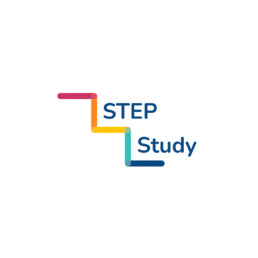
Written by STEP Study
The Schools Training to Enhance support for LGBT+ young People (STEP) study, funded by the TRIUMPH network, is being co-led by a research team at the ESRC Centre for Society and Mental Health, young people, and the Mosaic LGBT+ Young Persons Trust.
For many LGBT+ young people, school can be a place of growth—a “home away from home”—or an environment just as bad as the alternatives.
Bullying and peer victimisation experiences such as violence, anti-LGBT+ language, exclusion, and pressures to conform are all more common for LGBT+ students. These experiences adversely affect mental health and well-being, such as a sense of belonging, feelings of physical and psychological safety, and access to support. These things contribute to higher levels of problems such as depression, poor body image, self-harm, substance misuse as well as suicidal thoughts and behaviours among young people who identify as LGBT+.
Teachers and other staff who create more accepting environments can break this cycle. To support LGBT+ students, it is important that they understand LGBT+ issues and how being LGBT+ might affect students; and stand up for them and actively challenge bullying and discrimination, to create more accepting environments and help prevent mental health issues.
The Schools Training to Enhance support for LGBT+ young People (STEP) study, funded by the TRIUMPH network, is being co-led by a research team at the ESRC Centre for Society and Mental Health, young people, and the Mosaic LGBT+ Young Persons Trust. We are working together to:
- Identify what training is already available to school/college staff
- Understand what makes it easier or more difficult for schools to access training, and to find ways to support uptake for different schools/colleges.
- Improve training for secondary schools/colleges to better support LGBT+ pupils, focusing on what young people and staff think is important for school/college staff to know.
We want to ensure that our work is intersectional. We are learning more about how schools and colleges can better support the well-being of all young LGBT+ people. This includes minoritised racial and ethnic groups and faith communities, young people from low-income families, as well as young people living in rural and coastal areas.
So far, we have conducted interviews and focus groups with training providers in the UK to learn more about what their training covers, how it’s developed and links to student mental health. Through these conversations, we have started to identify barriers that schools face in taking up and implementing training to support LGBTQ+ students.
Next, young researchers will lead group discussions with pupils (aged 13-19 years) and school staff to identify what they think is important for school staff to know.
We will then hold two creative workshops, both co-led by young researchers and including:
- Students aged 13-19 years: to identify and design potential improvements to existing training.
- School/college staff and people who run teacher training courses: to design ways to increase training uptake by schools.
We will use our findings to recommend changes to schools training, and to plan a larger research project to test out these improvements in terms of their impact on young people’s mental health.
Get involved in the STEP study
We are currently recruiting i) young people (aged 13-19), ii) school staff and iii) providers of training to schools on LGBT+ issues to take part in an interview or focus group, and/or a creative workshop co-led by young researchers. Please get in touch if you would like to get involved and feel free to share with anyone who may be interested.
We would particularly like to hear from you if any of the following apply:
- You identify as LGBT+
- You identify as Black African, Black Caribbean, Asian, Latin American, Middle Eastern, from a mixed or any other racial or ethnic background
- You are a person of faith
- You live in a rural or coastal area
Why is the STEP study important to young people?
Juliet, student and young adult researcher in the STEP study coproduction team
“I think this project is really important to young LGBTQ+ people, because when we get together as a community, we see that there are huge school to school and regional differences, in how topics like relationships and sex education are addressed. And that this also influences young people’s obviously mental health and coming out journeys, or many of them struggling with their sexuality. A good school versus a bad school, can mean the difference between getting into a good university versus, and having a good job, versus not being very successful in life.”
Further information
To get involved in the project or for more information visit: http://www.stepstudy.co.uk/
You can also e-mail: steps@kcl.ac.uk
Follow us on Twitter: https://twitter.com/TheStepStudy or Instagram: https://www.instagram.com/thestepstudy/
Engaging and Empowering Students in DEI Work

Written by Lois Nethersell-Webb
Lois is a History teacher and DEI Lead at a rural Norfolk High School. In this role she is leading whole school training on diversifying the curriculum. Lois is also a founder of the Norfolk DEI Network and is passionate about encouraging and guiding young people to become change makers.
What kind of adults do we want our students to become? Do we want them to passively accept the status quo or do we want them to become active citizens who question the world around them? If the latter, then we must model and shape this behaviour in schools by providing them with opportunities to express their views and lead on causes that ignite their passions.
Students need to see that becoming involved in DEI work within schools or, indeed, wider society, is a sign of strength. When the government views standing up for marginalised groups as ‘woke’ we are fighting a populist narrative. Educators need to demonstrate to students that standing up to a friend who uses racist or homophobic slurs is not woke, it is strength. Educators need to demonstrate to students that calling out your mate who has made sexualised comments to a female student is not woke, it is strength. Educators need to demonstrate to students that refusing to mimic the accent of a new teacher is not woke, it is strength.
One way that schools can demonstrate active citizenship to the pupils in their charge is through setting up intersectional diversity groups. Whilst student groups focused on one particular protected characteristic, such as Pride Club, have their place, an intersectional group enables students with different protected characteristics, and their allies, to come together and support each other. We must create safe spaces for students to discuss concerns and lived experiences before supporting them to curate ways in which to spread their narratives across the whole student body.
Our student Diversity, Inclusion, Campaigns and Equality (DICE) group have been instrumental in raising awareness of a number of societal issues. Whether it be a cube of truth focused on male mental health or the lunchtime climate change protest, our students have thought of innovative and engaging ways to enlighten the wider student body and get them thinking about how change can happen. Showing students how to use their voice for good and how to channel their views is an essential part of their education.
All too often running student groups, like DICE, is left to chance. If there is a member of staff with a protected characteristic or who has a particular passion for DEI work then the student groups are formed. This should not be the case. LGBTQ+ teachers are tired of being the ones to start the Pride Clubs in schools. Black teachers are tired of being the ones who support students who have experienced racism. We need our allies. We need other educators, particularly white, able bodied, cisgendered male educators, to stand with us and help set up student groups. The power you hold is immeasurable. Help us set up our student groups and demonstrate that DEI work is the work of all.
To create a truly diverse, equitable and inclusive society all adults, no matter their lived experiences, must see tackling injustice and inequality as their responsibility. For this to happen we must start by showing students that DEI work is a collective responsibility. If you want to help your students become young changemakers – set up an intersectional student DEI group; neither you nor your students will regret it.
Global Learning, Digital Global Citizenship and the SDGs – 8 Learning Opportunities for SEND Settings
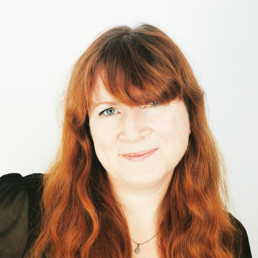
Written by Dr Harriet Marshall
Head of Educational Research at Lyfta and has been a global education advocate for over 20 years, as a teacher, researcher, consultant and education project leader.
The challenge of bringing the outside world into an indoor learning space has had a lot of attention recently as a result of ‘lockdown-learning’ requirements. However, many in the field of global learning have been actively working on this pedagogical task for decades in a variety of ways. Recently, practice has been ramped up a gear, thanks to youth mobilisation to stop climate change, David Attenborough’s chart-busting ‘Our Planet’, the UN’s 17 Sustainable Development Goals (SDGs), and a new range of digital global citizenship education opportunities.
Global citizenship education, sustainable development education or human rights education can be an empowering, enriching, and transformative educational experience. The extent to which UN states also believe this work crucial is manifested in Target 4.7 of the SDGs:
By 2030 ensure all learners acquire knowledge and skills needed to promote sustainable development, including among others through education for sustainable development and sustainable lifestyles, human rights, gender equality, promotion of a culture of peace and non-violence, global citizenship, and appreciation of cultural diversity and of culture’s contribution to sustainable development. (Source: sdgs.un.org)
The 2030 Agenda for Sustainable Development, the resolution adopting the SDGs, pledged to ‘leave no one behind’ and recognises the dignity of all and equality among all. The plan therefore rightly highlights an opportunity to consider complex global issues relating to equality, diversity and inclusion in all sorts of settings – including schools.
There are many ways in which schools are opting to bring in global learning – from school awards (such as UNICEF’s Rights Respecting Schools) to working with regional Development Education Centres to engaging in programmes like the British Council’s Connecting Classrooms. Some teachers are familiar with publications such as Oxfam’s Guides for Teachers on the ‘Sustainable Development Goals’ or ‘Global Citizenship Education’ and so use these to identify a curricular and pedagogic strategy right for the needs of their students. Research hubs such as the Development Education Research Centre (UCL London) have also now established global learning as a credible educational field by researching practice around the world and producing peer-reviewed publications such as the International Journal of Development Education and Global Learning. However, we do not yet know enough about effective global learning practice in SEND settings – but we do know that some exciting and transformative practice is taking place.
An increasingly popular methodology for supporting global learning and empathy-building combines both an ancient pedagogic technique with a modern-day one – storytelling and film making. We believe in capturing human stories through powerful short films which can then be turned into 360-degree interactive spaces for learning. Through this, students and teachers can navigate a virtual globe, explore different countries and visit various storyworlds. The films offer a unique glimpse into someone’s life and/or home and a snippet of how they see their lives and the world at a particular moment in time. No story provides a complete picture of an issue, but it helps bring things to life for students by using real-world examples and themes. Aligning this with lesson plans and resources mapped to the UN’s Sustainable Development Goals will also help build cultural awareness and global citizenship amongst students.
Let’s take a look at some of the ways in which global learning can positively impact students with special educational needs (SEN) and/or disabilities by drawing upon schools already doing this through various global learning methodologies:
- Enhancing independent learning and confidence building: Most case studies and reports emphasise how digital global learning resources can enhance independent learning and build confidence – something educators working with students with SEN have especially noticed and appreciated. One teacher from Elms Bank school has been using Lyfta’s global learning immersive digital stories with her class of students with autism. Although at first sceptical about how students might respond to the international storyworlds and subtitles, she noticed the extent to which the children engaged and empathised with the people featured in the stories and how it opened up opportunities for them. The teacher explained, “it brings the outside world into the classroom without having to go anywhere… it immerses them and engages them in a world which isn’t open to them, which they would find so difficult to be able to go and travel to places and talk to people…it allows them to do that without having to leave a space… without the pressures of unknown and the pressures of communication which might happen, they can become more independent”. Another example relates to how teachers and students are often similarly unaware of the details of global learning issues and this more level knowledge playing field can be empowering for students – offering them an opportunity to lead on topic direction or independent exploration on a range of levels.
- Supporting blended, remote and flexible learning: Global learning through immersive platforms can support a blended learning approach in a variety of settings. Digital resources that offer flexibility and choice about delivery methodology support SEN teachers in their unique settings. From a group of physically disabled students in Finland who have enjoyed the post-viewing discussions after watching real-world videos covering specific scenarios and themes to a UK teacher in an alternative provision setting who found students actually participated thanks to the option of collectively inputting ‘student’ responses to global learning questions (thus navigating obstacles to participation such as the shame felt by ‘poor spelling’).
- A useful opportunity to map, connect and combine different global learning approaches and pre-existing activities: Combining a whole school award with deeper-dive resources can provide the collective overview and the bespoke teaching methodologies required for SEN settings. For example, one teacher from the Venturer’s Academy said “I work with students who require a lot of sensory input to their learning so I’m using Lyfta to support them by creating an immersive learning experience. We are a Rights Respecting School and the platform works alongside this perfectly, enabling me to fully embed the Rights and SDGs across the school.” Other teachers have talked about how the practice of reflecting upon where global learning is already taking place in the school (such as gardening projects for sustainable and healthy lifestyles or international school-linking initiatives) can be helpful in many ways.
- Increasing engagement with physical activity (and other subjects): The UN’s SDGs combined with an immersive digital global learning resources can support PE teaching with children with SEN. For example, alongside the Youth Sport Trust and Lead Inclusion Schools across the country, we created a guide that uniquely connects PE, school sport and health and wellbeing together through immersive storyworlds aligned with the UN’s SDGs. The aim was to provide practitioners with the opportunity to engage young people in their schools that may not have previously accessed school sport, and develop confidence to access new opportunities, with the long-term outcome of increasing take up in physical activity.
- Global learning resources offering a non-sequential (and non-hierarchical) ordering of themes can fit in well with student interests and curriculum topics and priorities. Global learning is a lot about values and attitudes, but it is also about real world knowledge which has been reported as being perceived to be both relevant and interesting by students. Teachers in SEN settings have also talked about how immersive technology and storytelling can be used within a range of subjects, providing links and continuity to support student understanding.
- Global learning and digital global citizenship resources can be a way of teaching across different age-groups. Linked to point 5, opportunities for vertical teaching strategies are often useful when working with mixed-aged groups of students with different needs. The consistency of common themes can also assist in transition work.
- Building intercultural understanding and meeting those from other countries without traveling: One teacher at Rivermead School (post-16 Partnership) said how much she had enjoyed seeing her students engage with resources: “I work with students with SEN and we are a very small provision (seven students) but I have loved seeing their reactions and behaviour during our sessions where we discover new worlds. They are very respectful of other cultures and it is lovely to hear them discuss these later on that week or even a few weeks later.” Another teacher who worked with students with autism said that it was a unique opportunity for students to feel part of the world and meet people from other cultures or countries when they are highly unlikely to in their non-digital lives in the near future.
- A useful pedagogic technique for bringing in PSHE, relationships, challenging stereotypes, life-skills and self-care themes. Storytelling can help reinforce life-skills around subjects such as hygiene and health by addressing these themes but in a different context. The same can be applied to introducing more sensitive topics such as stereotyping and difference.
Prior to 2020, we could not have predicted the vital role remote learning would play in delivering the curriculum and enhancing human connection at a time of physical disconnection. While most evidence here is anecdotal and there is a need for more rigorous research on the extent to which global learning can facilitate a greater understanding of other communities and cultures, there are several educators working with children with SEN who have discovered many reasons to be optimistic. In fact, some settings may even be able to lead the way in developing innovative and useful methods, strategies and pedagogies when working with digital global learning resources.
If you would like to hear more about Lyfta or access free teacher training and trial access, sign up here.

